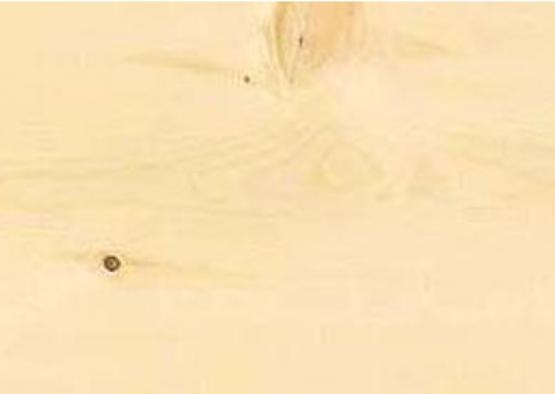Yellow cedar is a North American softwood timber renowned for its attractiveness, durability and ease of tooling.
Camcedar, Nootka Cypress, Sitka Cypress, Pacific Yellow Cedar, Alaska Cedar
Chamaecyparis nootkatensis

This rare and exceptionally beautiful wood species occurs only on the Pacific coast of North America, from Alaska south to Oregon. It is one of the slowest growing tree species in North America; 50 to 60 annual growth rings per inch are not uncommon, with some living specimens believed to be around 1200 years old.
Yellow cedar is a bright timber, ranging in colour from soft yellow to light brown. Sapwood occurs as a very narrow band and is almost white to yellowish white. Heartwood is a bright clear yellow, darkening upon exposure. The grain is typically very straight with a fine and even texture. The timber is quite light, being only slightly heavier than western red cedar. It is also highly aromatic, due to the presence of naturally occurring oils.
Prized by boat builders, yellow cedar has exceptional natural durability - resistance to weather, insects and contact with soil - as well as dimensional stability and ease of tooling. The timber stands up to constant wear and load impacts without forming ridges or splitting. Yellow cedar resists splintering and wears smoothly over time. The timber is easily worked by hand or machine, turns and carves well, and finishes beautifully. It readily accepts standard fittings and fastenings, though resinous glues are recommended for bonding.
Common applications of yellow cedar include flooring, decking, paneling, exposed ceilings, roofing shingles, custom woodworking, carving and millwork. The timber has been used since ancient times for boat building, and racing boat enthusiasts often use it for high-performance shells. The timber's resistance to splintering makes it a popular choice for stadium seating, sauna and indoor pool areas, and outdoor furniture.
Shrinkage
| Very Low | Low | Medium | High | Very High | |
|---|---|---|---|---|---|

|

|
||||
Tangential : |
2.50%
|
||||
Radial : |
1.10%
|
||||
Unit Movement Tangential: |
0.21%
|
||||
Unit Movement Radial: |
0.10%
|
Strength Group

Very High |
High |
Reasonably High |
Medium High |
Medium |
Reasonably Low |
Low |
Very Low |
||
Unseasoned: |
S1 |
S2 |
S3 |
S4 |
S5 |
S6 |
S7 |
S8 |
|
|---|---|---|---|---|---|---|---|---|---|
 |
|||||||||
Seasoned: |
SD1 |
SD2 |
SD3 |
SD4 |
SD5 |
SD6 |
SD7 |
SD8 |
|
 |
Stress Grade

| Structural No. 1 |
Structural No. 2 |
Structural No. 3 |
Structural No. 4 |
Structural No. 5 |
|
Unseasoned: |
F7 |
F5 |
F4 |
|
|
Seasoned: |
F8 |
F7 |
F5 |
F4 |
|
Density per Standard

Seasoned: |
490kg/m3
|
|---|---|
Unseasoned: |
500kg/m3
|
Joint Group

Very High |
High |
Reasonably High |
Medium |
Low |
Very Low |
|
Unseasoned: |
J1 |
J2 |
J3 |
J4 |
J5 |
J6 |
|---|---|---|---|---|---|---|
Seasoned: |
JD1 |
JD2 |
JD3 |
JD4 |
JD5 |
JD6 |
 |
Colour

| White, yellow, pale straw to light brown | Pink to pink brown | Light to dark red | Brown, chocolate, mottled or streaky | |
 |
||||
Mechanical Properties
Modulus of Rupture - Unseasoned: |
44
|
|---|---|
Modulus of Rupture - Seasoned: |
77
|
Modulus of Elasticity - Unseasoned: |
7.9
|
Modulus of Elasticity - Seasoned: |
9.8
|
Maximum Crushing Strength - Unseasoned:  |
21
|
Maximum Crushing Strength - Seasoned: |
43.5
|
Impact - Unseasoned: |
|
Impact - Seasoned: |
|
Toughness - Unseasoned: |
|
Toughness - Seasoned: |
|
Hardness - Unseasoned: |
2.0
|
Hardness - Seasoned: |
2.6
|
Durability
| Low | Moderate | Reasonably High | High | |
| (0 - 5 yrs) | (5 - 15 yrs) | (15 - 25 yrs) | (more than 25 yrs) | |
In-Ground: |
 |
|||
| (0 - 7 yrs) | (7 - 15 yrs) | (15 - 40 yrs) | (More than 40 yrs) | |
Above ground: |
 |
|||
| (0 - 20 yrs, usually < 5) | (21 - 40 yrs) | (41 - 64 yrs) | (More than 60 yrs) | |
Marine Borer Resistance: |
Lyctid Borer Susceptibility: |
Not Susceptible |
|---|---|
Lyctid Borer Susceptibility - Other: |
|
Termite Resistance: |
Resistant
|
Fire Properties
Smoke Development Rate: |
<750
|
|---|
| 1 - non-combustible | 2 - reasonably non-combustible | 3 - slightly combustible | 4 - combustible | |
Fire Properties Group |
Average Specific Extinction Area: |
<250
|
|---|---|
Bushfire Resistance: |
Not Tested
|
Yellow cedar sapwood occurs as a very narrow band, being almost white to yellowish white. Heartwood is a bright clear yellow, darkening upon exposure. The grain is typically very straight with a fine and even texture. Growth rings are close together and not prominent.
Because of its light weight and extreme durability, yellow cedar is highly recommended for external applications such as decking, weatherboards, handrails, veranda posts and outdoor furniture. It is a premium boat building material, and is found in saunas and indoor pool areas.
Yellow cedar is easily worked by hand or machine, accepts coatings well and finishes beautifully. Bonding is best achieved with resin-type adhesives.
Allied Forest Products

ATS Building Products

Cedar Roofing
Decking Perth
Dekhar Outdoors

Ridgewood Timber Pty Ltd

